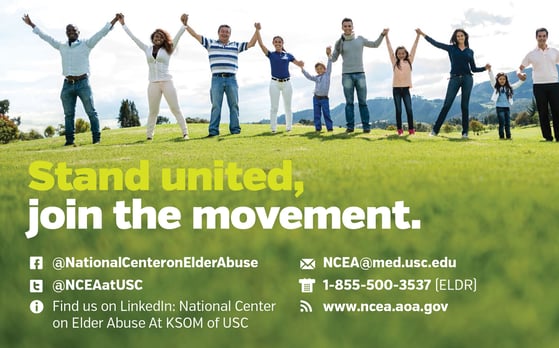
Every year it is estimated 5 million Americans are victims of elder abuse, neglect or exploitation. Unfortunately, as many 23.5 abuse cases go unreported for every reported case. You can help by recognizing the signs and knowing where to turn.
What is Elder Abuse?
In general, elder abuse refers to intentional or neglectful acts by a caregiver or “trusted” individual that lead to, or may lead to, harm of a vulnerable elder. Physical abuse; neglect; emotional or psychological abuse; verbal abuse and threats; financial abuse and exploitation; sexual abuse; and abandonment are considered forms of elder abuse. In many states, self-neglect is also considered mistreatment.
Who is at Risk?
Elder abuse can occur anywhere – in the home, in nursing homes, or other institutions. It affects seniors across all socio-economic groups, cultures, and races. Based on available information, women and “older” elders are more likely to be victimized. Dementia is a significant risk factor. Mental health and substance abuse issues – of both abusers and victims – are risk factors. Isolation can also contribute to risk. Read the statistics on elder abuse.
What Should I Do if I Suspect Elder Abuse?
REPORT YOUR CONCERNS
Most cases of elder abuse go undetected. Don’t assume that someone has already reported a suspicious situation. To report suspected abuse in the community, contact your local Adult Protective Services agency. For state reporting numbers, visit the NCEA website at www.ncea.aoa.gov or call the Eldercare Locator at 1-800-677-1116.
Look for these red flags, click here.

